Alma Mater Studiorum – Università di Bologna, Politecnico di Milano, Università degli Studi di Palermo, AEFFE S.p.A
RE-WASTE project investigates the ways of collecting and processing production waste of textiles and
semi-finished products (for clothing, interior and related areas), identifying new strategies,
methodologies and tools that allow to reuse the waste inter- or trans-supply chain. Through a
design-driven approach, it is intended to identify and strengthen the best practices of Made in Italy
textile production systems, supporting the dialogue between small and large producers according to
industrial symbiosis logics.
The textile-clothing sector in Italy represents one of the most significant sectors of national
manufacturing in terms of the number of companies (about 45,000), employees (400,000), and turnover
(55 billion €), accounting for more than 30% of the entire European sector. But it also represents one of
the sectors with the highest impact on the environment, due to the amount of waste produced that is
not reintroduced into the production cycle: in 2019, the textile sector produced about 480,000 t of waste
(ECOCERVED data), an increase of 39% compared to 2010. We must also consider the impact of metal
materials and accessories related to the textile world, which require a specific line of research aimed at
reducing the presence of precious metals and recovering them.
With this in mind, the RE-WASTE project, through design-driven methodologies related to circularity
(recycling, upcycling, regeneration…), aims to operate in the collection, sorting and management of:
leftovers and deadstock from textile production; defective and unsuitable fabrics for the supply chain;
branded and unbranded cutting waste; defective semi-finished products unsuitable for sale; branded
fabric leftovers; textile materials from and for other supply chains (e.g. fishing nets). The project operates
within an ecosystem vision in which companies, professionals, research and educational institutions
collaborate with the goal of adapting the Italian production system to current and future environmental
and social needs.
Starting with an extensive mapping of textile production chains in Italy, models for recovering textile
waste and reintroducing it into the production cycle will be designed. These models will be applied, in the
experimentation phase, to the Prato district, which represents the most important textile center at the
European level and, since its origins in the 13th century, is distinguished by its specialization in
production and strong inter- and trans- supply chain integration. Therefore, the project aims to support
the textile sector in this transition, to enable its development and protect specificities, skills and
knowledge with the goal of attracting talent and stimulating innovation.
The project will be divided into 5 WPs:
WP1 Project Management: administration, management and executions of the project.
WP2 Modeling of design approaches, methodologies, and tools: mapping of the textile district supply
chain in Italy and inter- and trans- supply chain relations; LCA; monitoring of textile manufacturing
processes and identification of waste production stages; analysis of current methodologies and tools for
textile waste treatment and recovery; separation of metals from the textile chain and their reuse; application of microbiology in textile waste processing; investigation of legal and intellectual property
issues of branded textile waste; data management and protection; definition of one or more models for
collection, treatment and reuse of textile and semi-finished product production waste.
WP3 Design-driven experimentation: application of the models defined in WP2 to the Prato textile
district as a local but complex supply chain example.
WP4 Validation: proof of concept of solutions validation, allowing to verify the decrease of textile waste
thanks to the tested models.
WP5 Project scientific dissemination and communication: it will include all physical and digital communication activities and scientific dissemination connected to the Spoke activities, in alignment
with the overall EP’s activities, with the aim to promote skills and knowledge.
The RE-WASTE project aims to design and test a model for the reduction and collection of textile production waste and its reintroduction into the production chain, with a circular approach. The model will be replicable in other contexts (territories or supply chains) and will enable the strengthening of manufacturing symbiosis. The results will have economic, social and cultural impacts. Among the main ones: ENVIRONMENTAL AND ECONOMIC: a) the reduction of impacts of the design, development and manufacturing processes in the textile industry; b) creation of new industrial supply chains and redesign of existing ones; c) the reduction of produced final wastes; d) reduction of the environmental impact in the supply of materials. SOCIAL: a) maintenance and creation of new jobs related to the competitive growth of production systems; b) realization of virtuous cycles based on the use of waste as secondary raw materials; c) improvement of uptake and waste utilization; d) reduction of waste accumulation in the environment. CULTURAL: a) the creation of new skills, knowledge, and competencies related to circular and sustainable PSS at different levels; b) new models of collaboration between research organizations and companies; c) creation of a new generation of researchers skilled in sciences applied to Ecological Transition; d) the creation of new skills, knowledge, and competencies related to recovering and exploiting industrial scraps and wastes. Specifically, the RE-WASTE project will produce the following outcomes: R1. Research report on the state of the art of the textile industry in Italy, with a focus on current approaches, methodologies, and tools for waste collection and management (inventories, deadstock, scraps), circular production initiatives, business models and processes. R2. Guidelines for resilient, sustainable and circular re-engineering of the textile supply chain in order to re-introduce waste into the production cycle. R3. Simulation models to evaluate and develop new design-driven methodologies to re-design zero-waste circular business models in the textile supply chain. R4. Innovative Textile Lab where simulation models (R3) will be tested through collaboration between universities and companies. The Lab will be equipped with software and hardware technologies where the pilots take place for testing and validating circularity in the fashion textile sector. R5. Decision support tools for practitioners and policymakers. R6. Scientific publications that aim at interdisciplinary disseminating the achievements of the project.

Progetto n.: PE_00000004
MADE IN ITALY CIRCOLARE E SOSTENIBILE
C.F. 97931690156